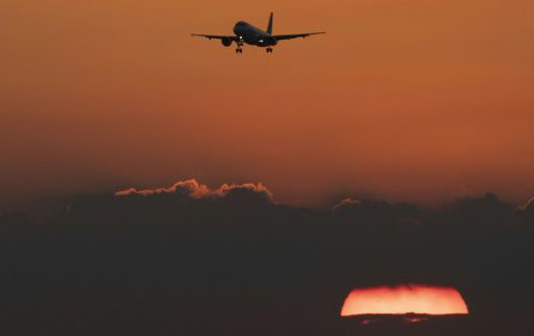PARIS, June 9, 2019 (BSS/AFP) – Under pressure from frequent flyers alarmed
over climate change, the airline industry says it is “hellbent” on reducing
emissions – but the technology needed to drastically reduce its carbon
footprint is still out of reach.
In recent months climate activists have stepped up efforts to convince
travellers to boycott air travel, with Swedish schoolgirl and campaigner
Greta Thunberg spearheading the trains-over-planes movement and making
“flygskam”, or flight shame, a buzzword in the Scandinavian country.
“The sector is under considerable pressure,” admitted Alexandre de Juniac,
chief executive of the International Air Transport Association (IATA), whose
members met this week in Seoul.
The industry has been under fire over its carbon emissions, which at 285
grams of CO2 emitted per kilometre travelled by a passenger far exceed all
other modes of transport. Road transportation follows at 158 and rail travel
is at 14, according to European Environment Agency figures.
De Juniac said the industry was “hellbent” on lowering emissions but the
sector is also accused of underestimating its environmental impact, with the
IATA chief lobbying heavily against a “green tax” on aviation backed by
several countries including the Netherlands.
“Often these taxes are absorbed in the budgets of states and are spent on
whatever they want, except the environment,” he said.
The International Civil Aviation Organization (ICAO) estimates that air
transport is responsible for two percent of global CO2 emissions — roughly
equivalent to the overall emissions of Germany, according to consulting firm
Sia Partners.
But aircraft also emit particles such as nitrogen oxides, which can trap
heat at high altitude, meaning the industry is actually responsible for five
percent of global warming, according to the Climate Action Network, an
umbrella group of environmental NGOs.
The industry has committed to improving fuel efficiency by 1.5 percent per
year from 2009 to 2020 and stabilising its CO2 emissions in preparation for a
50 percent reduction by 2050 compared to 2005.
It is a major challenge given that the number of passengers is expected to
double over the next two decades to reach 8.2 billion in 2037.
– Biofuels, electric engines –
Companies are banking on a new generation of less polluting planes with
updated engines, aerodynamic modifications and fittings that weigh less —
among them tablets to replace heavy pilot manuals.
However Shukor Yusof, analyst with Malaysia-based Endau Analytics, told AFP
the industry had made progress but “that all these technological advances to
cut emissions are tough to implement quickly due to the nature of the
industry hemmed by high costs and the fact that planes typically take decades
before they are replaced”.
Philippe Plouvier, associate director of consulting firm Boston Consulting
Group in Paris, said “the constant renewal of the fleet is a major part of it
(cutting emissions)”, explaining that the latest models of large aircraft
reduce CO2 by 20 to 25 percent.
“But that only solves around 30 percent of the problem,” he said. The rest,
he added, can only be resolved by developing sustainable biofuels or turning
to electric power — technology which is currently impractical.
Several airlines have begun testing biofuels but production costs remain
high and industry experts do not believe electric engines will be rolled out
commercially for another two decades.
“Batteries today are still too big and heavy to be used as the main source
of power for aircraft,” said Leithen Francis, managing director of Singapore-
based aviation public relations agency Francis & Low.
“Aircraft today take off heavy — because the aircraft is carrying a full
load of fuel — but then then the aircraft uses up its fuel during the flight
and lands light.
“Aircraft powered by batteries will take off heavy and then have to land
heavy, so developing aircraft that can do that — without having a hard
landings or causing structural damage to the airframe — will be a
challenge,” Francis told AFP.
The ICAO says better management of air traffic can help and a new
generation of more fuel-efficient plane designs is predicted within five or
ten years.
But time is not on the aviation industry’s side.
A landmark UN report last year concluded that CO2 emissions must drop 45
percent by 2030 — and reach “net zero” by 2050 — if the rise in Earth’s
temperature is to be checked at the safer limit of 1.5C.
Plouvier of the Boston Consulting Group said to meet the 2050 goal, the
aviation industry “must start today and very quickly”.



